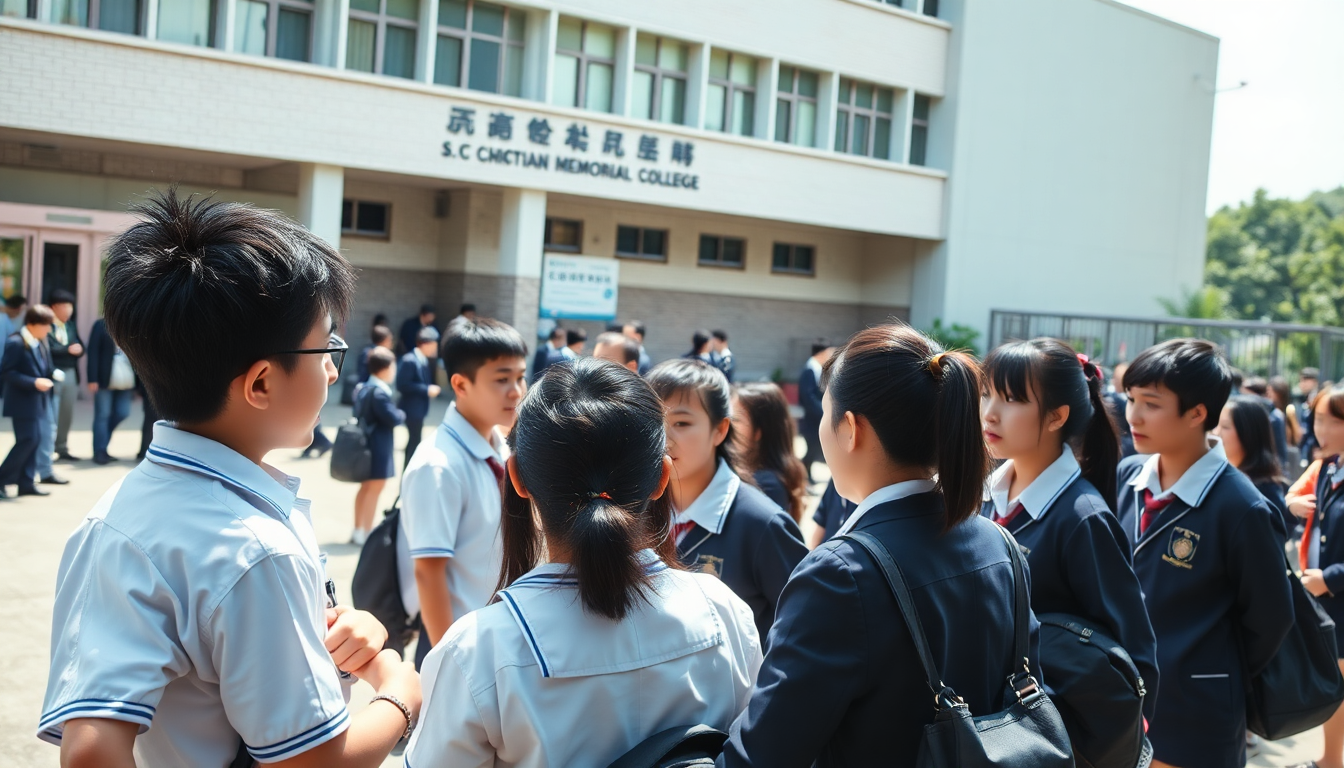Table of Contents
The dynamics of educational institutions often mirror the values and norms of society, particularly when it comes to grooming and personal expression. A recent incident at Christian Alliance S C Chan Memorial College in Tuen Mun, Hong Kong, has spotlighted the friction between school regulations and student individuality. The controversy revolves around a 15-year-old student’s hairstyle, which school authorities claim violates their grooming standards. Things escalated dramatically when the vice-principal reportedly confronted the student with a pair of scissors during a private meeting. Can you imagine the shock?
Background of the Dispute
The conflict kicked off when the student, currently in Form Three, was repeatedly told that his hairstyle, especially the length of his fringe, didn’t comply with the school’s grooming policies. These rules, common in many schools, aim to promote uniformity and discipline among students. But here’s the catch: enforcing such policies can lead to conflicts, especially when students feel their personal expression is being stifled.
On the day of the incident, tensions reached a boiling point during an end-of-term ceremony. The 57-year-old vice-principal reportedly had a private chat with the student about his hairstyle. During this discussion, he allegedly waved around scissors and instructed the student to cut his hair. Talk about a dramatic turn of events! Naturally, this alarming display prompted the student’s father to step in, seeking an explanation from the school the very next day.
After a long wait without a satisfactory answer from the principal, the father decided to involve the police, viewing the incident as a serious overreach of authority. The police have categorized this situation as a dispute and are currently investigating the matter. What does this mean for school authority moving forward?
School’s Response and Ongoing Investigation
In light of the incident, the school has announced that it is conducting an internal investigation and is committed to cooperating fully with both the police and the family involved. The administration has stressed its dedication to handling the situation fairly, recognizing the sensitivity of the issues at play.
Educational institutions face the challenge of balancing rule enforcement with respecting student autonomy. This case highlights the difficulties schools encounter when implementing grooming policies, which can sometimes feel outdated or overly restrictive. How the school manages this incident could set a precedent for future similar disputes. Are we witnessing a turning point in how schools approach student expression?
As the investigation unfolds, the reactions from the school community will be fascinating to watch. There’s potential for broader discussions about student rights, grooming standards, and personal expression in educational settings—especially in a vibrant city like Hong Kong, where cultural norms and individual freedoms often intersect.
Implications for Students and Schools
This incident raises essential questions about the role of schools in enforcing grooming policies and how far they should go in regulating students’ appearances. While many institutions argue that grooming standards help maintain discipline and a sense of community, students may feel these policies infringe upon their personal freedoms. Is it possible to find a middle ground?
Moreover, the involvement of law enforcement in what began as a school dispute complicates the narrative and may lead to increased scrutiny of how schools handle disciplinary matters. The broader implications of this case could resonate with other educational institutions, prompting them to reevaluate their policies and how they enforce them. Are schools ready to adapt?
Ultimately, the resolution of this situation won’t just affect the students at Christian Alliance S C Chan Memorial College; it could also spark nationwide discussions about grooming standards. As schools navigate the delicate balance between discipline and personal expression, engaging in open dialogues with students and families is crucial for fostering an inclusive environment. After all, isn’t education about more than just rules?


